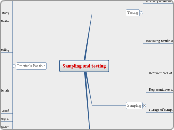Sampling and testing
Practicals Possible
Making/Distilling perfume
Geological testing
Extracting metals
Metal content
Link to usefulness of minerals
Crystalline structure
Reactivity
Microscope tests
Forensic
fibre comparison
Bodily fluids
Recycling of paper
Making fertilisers to fit certain requirements
Quality control sampling at Allied bakeries
Testing Antacids
Making a circuit board
identify good etching solutions?
Making Asprin
Urine testing for medical or athletic purposes?
Making materials
Making concrete, making cement
Making glass
Making borax silly putty
elasticity
Making Nylon
Environmental testing
Organisms in water
Weather
Temperature
Heavy metals
Waterbourne nitrates
pH
Soil
Rain
Pathlab?
Kevlar Case study
Mechanical Properties
Density
Mass
Breaking strain
Stretch
Testing suncream
UV Opacity
Testing food
Toxins
What Killed John Franklin?
Vitamin C
Fat
Reducing sugars
Starch
Microbes
Testing ice core samples
Minerals
Acidity
CO2
Processing
Evaluating a process
test against spec
ID a suitable process
Processing materials in the lab
SAFETY
carry out fairly independently
Sampling
Taking the samples
Clean and dispose of equipment in a correct manner
Corret method/equipment
SAFELY!!!
Be able to produce a risk assessment
storage of samples
How do I need to store my samples if the storage is not to alter my results?
How will storage affect samples?
Representative samples
Where and when should I take samples?
Is the source homogenous?
how many samples do I need to reflect what is here?
Requirements of sampling
Why are we sampling?
Testing
evaluating results of a test
Evaluation the quality of the test
concluding
Recording results
Statistical prcessing
graphs
Appropriate relations
Devising a suitable test
Validity
Precision
Reliability
Following a standard procedure
Risk assessment
Chemical testing
Crushing
Making a microscope slide

